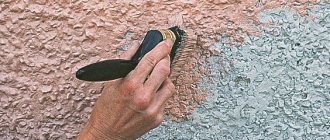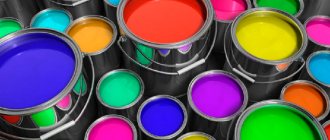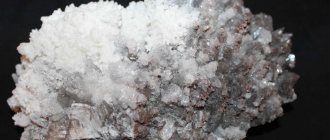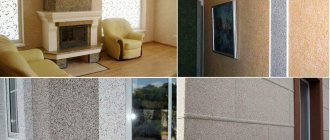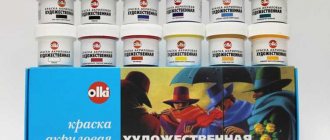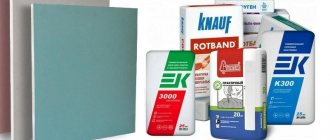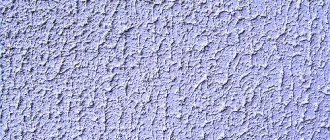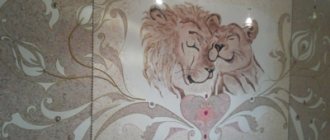Children full of energy, pets, hooligans, natural phenomena - this is not a complete list of what can spoil the original appearance of the finish, be it the facades of a country house or the walls of an apartment. To keep them in good condition for as long as possible, you need to take care not only of the beauty of the coating, but also of its protection. In this article we tell you everything you need to know about vandal-proof wall paint and more - an innovative material that will extend the life of any finish.
What it is
This is a finishing material that is used for various purposes. The main thing, of course, lies in protecting the surface.
- Protect walls from mechanical damage and contamination.
- If necessary, it is easy to wash off glue or traces of paint and varnish products from the surface.
- Do not allow pets to sharpen their claws and damage the finish.
- Prevent destruction due to temperature changes and weather conditions.
- Protect the coating from penetration of acids, alkalis, water and salts.
Due to its technical characteristics, anti-vandal paint is stronger than regular paint and lasts longer, so you won’t have to repaint the walls often. This compensates for its high (compared to conventional paint and varnish) price.
The finish can be transparent or colored, matte or semi-matte. In general, visually it is no different from conventional paintwork. When applied, it forms a thin, uniform layer that does not create adhesion to other materials and thus repels marks from the can and any other contaminants.
Due to its high strength and resistance to temperature changes, the material is suitable for both interiors and exteriors. You can use it both on an already damaged wall, and as a preventative measure that will allow you to maintain the original condition of the finish for as long as possible.
Instagram @alvhem
Unsplash
Instagram @argileru
What are the advantages
There are many benefits to protective paint.
- Long service life - on average it stays on the walls for 10 years, and sometimes more. It is resistant to ultraviolet radiation, so it does not lose its fresh color over time.
- Versatility - it can be tinted or left transparent. In the second case, the mixture can be applied to the wallpaper, and it will not cover either the color or the pattern on it.
- Low adhesion - minimal adhesion of materials to each other protects walls from contamination, the effects of chemical compounds, and does not allow adhesive tape to adhere.
- Safe for health - due to the low content of volatile compounds, it can be used in any residential area.
- Easy to apply - easy to do yourself, no need to hire specialists if you use the classic liquid consistency.
- Protection against corrosion - anti-vandal paint for metal gives it additional anti-corrosion protection, since the material excludes external contact with the metal surface.
- Resistant to solvents and chemicals - thanks to this, the coating can be washed even with aggressive synthetic agents, quickly removing patterns or dirt. In this case, the finish will not be damaged.
Instagram @stadshem
Instagram @ort_interiors
- Decoration Materials
Anti-vandal wallpaper: a guide for those looking for a durable finish
Finishing
After the plaster layer has completely dried, it can be additionally coated with paint and special compounds. This applies more to structural plaster, since mosaic plaster is already very durable without these operations.
To give the required color, the surface is painted with acrylic or latex water-dispersion paints. For greater durability, it is recommended to choose a vandal-proof option.
After painting, the plaster is coated with waxes or varnishes, depending on the desired effects. This is the final sealing layer designed to further protect the coating.
There are universal anti-vandal coatings on sale that can be applied over any finishing materials, including plasters. Their properties are similar to paints: liquid and without a pungent odor in a container, allowing application with a brush or roller, elastic after drying. At the same time, they are transparent and do not distort the color of the base material. They reduce the adhesion of adhesives and paints to the treated surface, which means that if a leaflet or graffiti manages to stick to the wall, it can be easily washed off with clean water.
Additional video about another anti-vandal coating with a finishing finish.
What are anti-vandal paints for facades and interior works?
Protective compounds differ according to several criteria.
By composition
There is liquid and powder. The first option is similar to a standard paint and varnish material, suitable not only for interior work, but also for the exterior. Most often used. The composition is usually based on acrylic on any water-soluble base with the addition of polyurethane.
The second option is a dry mixture containing metal, ceramics and connecting polymers. It is economically consumed and suitable for application to any base, but this requires special equipment and special thermal conditions, so it is rarely used for DIY repairs. Most often it is used for painting metal gates and entrance doors. Externally, the mixture can be textured, with a metallic effect, matte or glossy, and also visually imitate wood, natural leather or stone.
Pexels
Instagram @stadshem
Pexels
Based on base material
The protective composition can be applied to almost any base. It could be concrete; wood and MDF; drywall; metal; brick; fake diamond; wallpaper; plastic.
Unsplash
Pexels
Unsplash
Alternatives
In addition to the paint itself, other anti-vandal coatings will also help protect the surface.
Plaster
The structure is identical to conventional plaster, but is more wear-resistant and durable due to mineral chips or quartz sand in the composition. It is often used in the entrances of apartment buildings, but can be used in an apartment or on the facades of a private house.
Visually it is a relief texture and comes in different colors. It is applied in several layers and secured on top with wax or special varnish.
Instagram @gevorgyandesign
Unsplash
Instagram @nenasheva_designer
Instagram @alex.decor44
Lucky
Widely used to protect the facades of country houses, extensions and garages. The average service life is 5-7 years, after which it is recommended to update the protective varnish. Fits well on any surface: wood, brick, concrete, plastic, brick.
Instagram @marin_architect_design
Instagram @evgeniy_architect
Wallpaper
This type is intended for residential premises and can be painted. Anti-vandal wallpaper is suitable for residential premises, so it can be hung in a nursery, living room, kitchen or any room with high traffic. Often used in apartments where there is a dog or cat.
Such wallpapers are made from various materials: for example, textiles or paper with an additional vinyl layer, fiberglass. The result is fabrics that are resistant to any mechanical stress and stress; not afraid of changes in temperature and humidity; easy to clean; resistant to fats, salts and acids.
Instagram @myremont_by
Instagram @aselya_k.b
Instagram @story.wellspring.studio
Application Features
The procedure for applying anti-vandal paint, as well as applying other paints, requires mandatory surface preparation. The surface on which paint will be applied or wallpaper will be glued must be carefully prepared.
It is necessary to remove dirt and dust from it and make it as smooth as possible. It is necessary to remove whitewash and damaged or defective pieces and remnants of the old coating. Grease, rust or mold stains must also be treated with special products and removed from the surface.
It is worth noting that surfaces that crumble or crumble must be treated with an acrylic-type primer. Otherwise, all anti-vandal paints and wallpapers will not be so durable.
The process of applying anti-vandal coatings is carried out using simple and traditional painting tools:
- roller;
- brush;
- spray.
You can apply the paint yourself. To ensure maximum protection, two coats can be applied to the surface:
- the first layer of coating can be diluted by 5-10% with plain water;
- The second, finishing layer is applied with clean, undiluted paint.
All painting work must be carried out at a temperature of at least +5 degrees. Immediately before applying the first layer, it is necessary to carry out a test surface treatment. Such actions help determine the level of absorption of the composition, as well as the correctness of its dilution.
Subsequent painting using a roller can be done slowly and deliberately. The formation of drips when using such paint is usually excluded due to the high viscosity of the coating.
Already a couple of hours after applying the first layer, you can apply the second layer. The second stage of work must be carried out at a temperature of at least +20 degrees. Over the course of a month, after applying the composition, polymerization of the applied paint occurs and during this entire time it is not worth subjecting the freshly treated surface to various loads.
